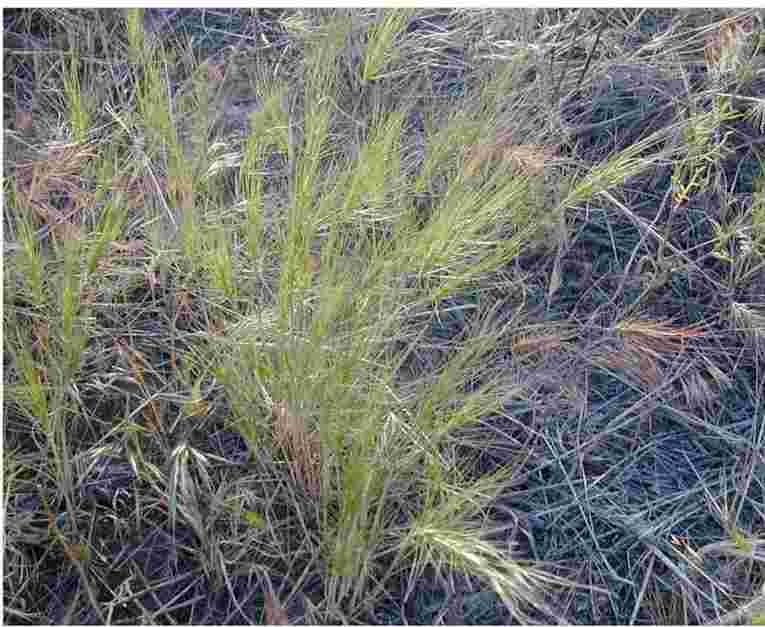|
Description:
Medusahead is a winter annual grass that
normally grows 6 to 10 inches tall. It begins
growing in the fall and produces narrow, rolled
leaves giving plants a slender appearance. One
to several stems grow upright from the base of
the plant and produce a dense spike of
individual florets each with thin awns 1 to 4
inches long. Flowering occurs in late May to
June after other annual grasses. The florets do
not easily break apart when mature, as the
individual seeds fall out, leaving the long thin
bristles attached to the seed head. The plants
turn from a wheat color to a very light cream
color after the seeds disperse. The plant
normally contains large amounts of silica,
allowing the dead plants to remain in place
longer than other annual grasses.
|

Photo by Lovina Roselle,
University of Idaho |
|
Management
Guidelines:
Type and Class of
Livestock:
All classes of sheep, goats, and cattle.
Grazing Objective:
Graze early in season to prevent seed production
and reduce medusahead mulch.
Growth Stage for
Treatment:
Graze winter rosettes in the spring.
Palatability drops rapidly as plants flower and
mature.
Potential Effectiveness:
Grazing causes a decline in plant vigor and
density after two years of intensive grazing.
Very effective if grazed repeatedly and seed
production is prevented. Grazing can be combined
with a burning, mechanical methods, and
herbicides. |
|
References:
Bodurtha, T.S., J.P.
Peek, Lauer, J.L. 1989. Mule deer habitat use
related to succession in a bunchgrass community.
Journal of Wildlife Management
53:314-319.
George, M.R.,
R.S. Knight, P.B. Sand, and N.W. Demment. 1989.
Intensive grazing management on annual range.
California Agriculture 43:16-19.
Hilken, T.O., and R.F. Miller. 1980. Medusahead
(Taeniatherum asperum): A review and
annotated bibliography. Agricultural Experiment
Station Bulletin 644, Oregon State University,
Corvallis.
Lusk, W.C., M.B.
Jones, D.T. Torell, and C.M. McKell. 1961.
Medusahead palatability. Journal Range
Management 14:248-251.
Major, J., C.M.
McKell, and L.J. Berry. 1960. Improvement of
medusahead-infested rangeland. University of
California Agricultural Experiment Station.
Leaflet 123. 6p.
McKell, C.M., A.M.
Wilson, and B.L. Kay. 1962. Effective burning of
rangelands infested with medusahead. Weeds
10:125-131.
Miller, H. C., D. Clausnitzer, and M. M. Borman.
1999. Medusahead. In: R.L. Sheley and J.K.
Petroff [EDS.]. Biology and management of
noxious rangeland weeds. Corvallis, OR: Oregon
State University Press. p. 271-281. |